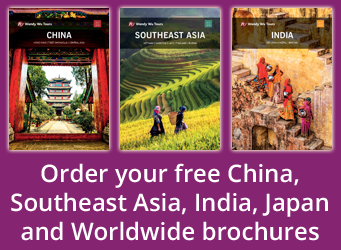Many health experts believe that Qigong has a number of psychological and physiological benefits. It is unsurprising that it is becoming an increasingly popular pastime.
People lucky enough to have been on an escorted China holiday might have come across Qigong, but despite its increasing popularity, Qigong is still unfamiliar to most and here we aim to give some detail about this ancient Chinese health care system.
In a nutshell, Qigong combines breathing techniques, a range of body postures and focused intentions. To help describe the different aspects that make up Qigong, we got the help of Qigong Southwest, who offer a range of Qigong courses and events across the south west of England.
Brad Richecoeur of Qigong Southwest, said, “Qigong is a way of directly experiencing and opening to the subtle energy known as Qi in oriental medicine. It connects us more deeply to the natural flow of energy around us and to the source of our aliveness.”
The origin of Qigong
Qigong has roots in Chinese medicine, philosophy and martial arts and is viewed by many as the practice to balance life energy and it has been practiced for thousands of years in China.
Richecoeur said, “Qigong’s origins lie in the preliterate society of China some 5,000 years ago. It is said to be the root of all Chinese medicine as well as the basic method through which the subtle energy body was first observed and mapped, leading to the system of meridians and points used by acupuncturists and bodyworkers.”
Today it is still commonly used in Shaolin Kung Fu and in other martial arts across China.
Benefits of Qigong
Qigong has been found to have a number of psychological and physiological benefits.
Richecoeur added, “Its benefits may include increased vitality and mobility, enhanced clarity of perception, the development of inner stillness, the clearing of chronic illness and, most of all, a deeper enjoyment of being alive.”
The styles of Qigong
Qigong has a variety of styles that are classified as martial, medical or spiritual. Despite being different styles, they all include posture, breathing and mental focus techniques.
Richecoeur said, “There are many and varied styles ranging from the sitting and meditative through to the exuberant and martial. It is the subject of extensive research in China and is fast gaining ground in the west both as a method of health maintenance and as a path of personal spiritual growth.
“Qigong Southwest promotes the Dao Hua Qigong style. Hua Gong, as it is more commonly known, which has been developed by Zhixing Wang and his wife Zhendi Wang. Hua means transformation, purification, integration, and liberation. Hua Gong focuses on health and healing, artistic creativity, and the spiritual aspects of Qigong practice. It is simple to learn, yet rich enough to become a lifelong practice.”
The Exercises
There are a range of Qigong exercises that combine slow graceful movements with mental concentration and breathing techniques.
The Qigong Institute has listed a number a different Qigong exercises such as the Flowing Motion, Rolling the Ball, the Inner Rivers Flowing exercise and the Push and Pick Up the Wheel exercise.
Check out the below video for an insight into Qigong.
 Visit China with the UK’s leading China Experts, Wendy Wu Tours. Our award winning escorted, fully inclusive tours visit all the major sights of China for an unforgettable holiday.
Visit China with the UK’s leading China Experts, Wendy Wu Tours. Our award winning escorted, fully inclusive tours visit all the major sights of China for an unforgettable holiday.
We also have amazing holidays to Cambodia, Vietnam, Laos, Japan, India and beyond…
Image Credit: Elvert Barnes (flickr.com), Qigong Southwest























